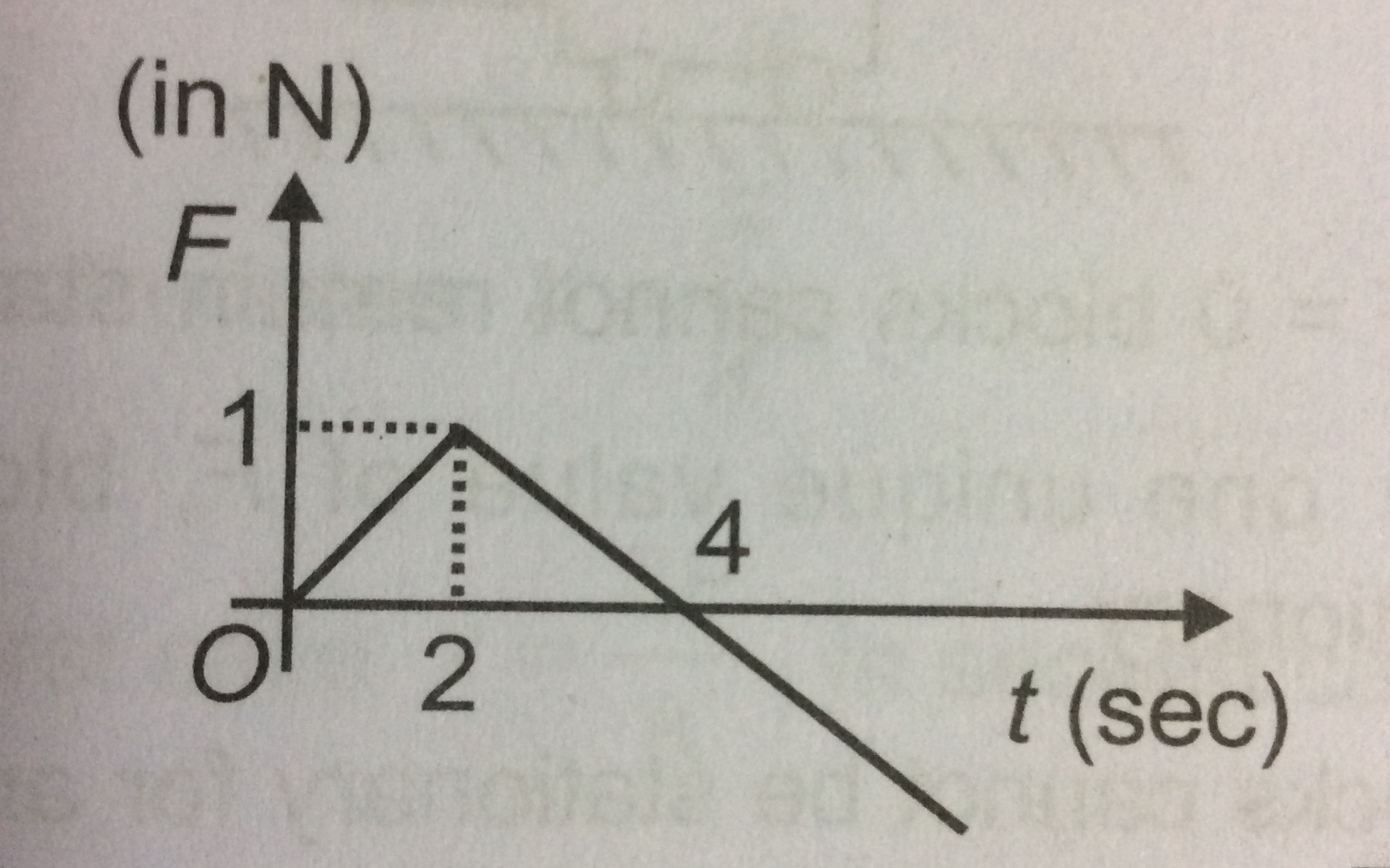Force acting on a body varies with time as shown below. If the initial momentum of the body is #vecP# then the time taken by the body to retain its momentum #vecP# again is?

1 Answer
This is what I get.
Explanation:
For
#y=mx+c#
#vecF_1(t)=t/2#
Let
Acceleration
#veca-=(dvecv)/dt#
#:. vecv(t)=1/(m) int t/2dt#
#=>vecv(t)=1/m ( t^2/4+C)#
where#C# is constant of integration.
At
Velocity at
Force equation for
#vecF_2(t)=-1/2t+2#
#veca_2(t)=-1/m(t/2-2)#
#vecv_2(t)=-1/m int(t/2-2)dt#
#vecv_2(t)=-1/m ( t^2/4-2t+C_1)#
where#C_1# is constant of integration
Using (2) to find out
#vecv_2(2)=-1/m (-3+C_1)=1/m(1+vecp)#
#=> (-3+C_1)=-1-vecp#
#=>C_1=2-vecp#
Imposing the given condition and solving for
#-vecp=t^2/4-2t+2-vecp#
#t^2-8t+8=0#
Solution of the quadratic gives us
#t=(8+-sqrt(64-4xx1xx8))/2#
#t=4+-2sqrt2#
Taking only
For magnitude of momentum we have two solutions as above.
